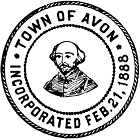Paul Zinni, Superintendent
1 Patrick Clark Drive
Avon, MA 02322
For Immediate Release
Monday, Oct. 2, 2017
Contact: John Guilfoil
Phone: 617-993-0003
Email: john@jgpr.net
Avon Public Schools Sees Nearly 30 Percent Reduction in Alcohol and Drug Use in Less Than 10 Years
Programs Implemented Through Drug-Free Communities Grant
AVON — Superintendent Paul Zinni is pleased to announce that Avon Public Schools has seen a 29 percent drop in alcohol and drug use among its students in less than a decade.
The town is now entering into its ninth year of its Drug-Free Communities (DFC) Support Program grant, which officials are using to continue to lower the rate of substance abuse in youths.
Awarded by the Substance Abuse and Mental Health Services Administration, the five-year grant provides recipients with $125,000 each year to implement programs and practices to address their community’s needs. Avon is on its second five-year grant allocation.
In 2007, prior to obtaining the grant, students at Avon Middle High School completed a youth health survey, which revealed that 47 percent were drinking on a regular basis. By 2015, through proactive educational endeavors, that number dropped to 18 percent. Preliminary results from last year’s survey indicate the numbers continue to trend downward.
“It took a lot of different strategies to make that happen, but we’re really proud of these numbers,” said Amanda Decker, Substance Abuse Prevention Specialist for Avon.
The first step came in 2008 when Avon formed the Avon Coalition for Every Student (ACES), which researched and implement strategies to curb alcohol and drug use in youths. Founding members included the police and fire chiefs, the Norfolk District Attorney’s Office, Avon Counseling, South Bay Mental Health, three parents, representatives from the Avon Public Schools administration team and a member of the School Committee.
Working on a volunteer basis, the coalition spent much of its first year collecting data and identifying risk factors that contribute to youth alcohol and drug use. After receiving the Drug-Free Communities grant in 2009, ACES began working to change the conversation about substance use.
They started the social norms campaign, which involved challenging students’ perceptions of what they believed to be reality. While the youth health survey indicated that 47 percent of students were abusing alcohol, the coalition focused on talking about the 53 percent of students — the majority — who were not.
“With young people, we learned that if their perception was that most of the student population was drinking and doing drugs, they would feel more compelled to be part of that,” Decker said. “So, by educating them that the majority of students were not abusing substances, we were able to alter their attitudes. As the statistics began trending downward, we continued to promote those positive behaviors.”
Through its research, ACES found that students were most likely to use alcohol or drugs after school, so members of the coalition worked to make sure kids always had something positive to do once they finished classes. Every year, Avon Middle High School hosts an ice cream social to share information about available after school programs, activities and clubs. Students are encouraged to sign up for at least one.
A student version of ACES also formed and provides feedback and ideas to the ACES, which in turn brings in speakers and implements new programs and campaigns. Last year, the coalition hosted a “You Asked For It” question and answer session. Students prepared a number of inquiries about alcohol and drugs, and a panel of school officials and community members answered.
This year, the coalition is working on a large campaign encouraging parents to talk to their children early and often about making healthy choices.
“I can’t give enough positive feedback to ACES, both the student and community groups, for all the work they’ve done over the last eight years,” Superintendent Zinni said. “Through their numerous educational campaigns, we have been able to drastically reduce the number of students who are using alcohol and drugs in town. I believe that as we persist with our work, especially over the next two years with the Drug-Free Communities grant, we’ll continue to see positive results.”
###

